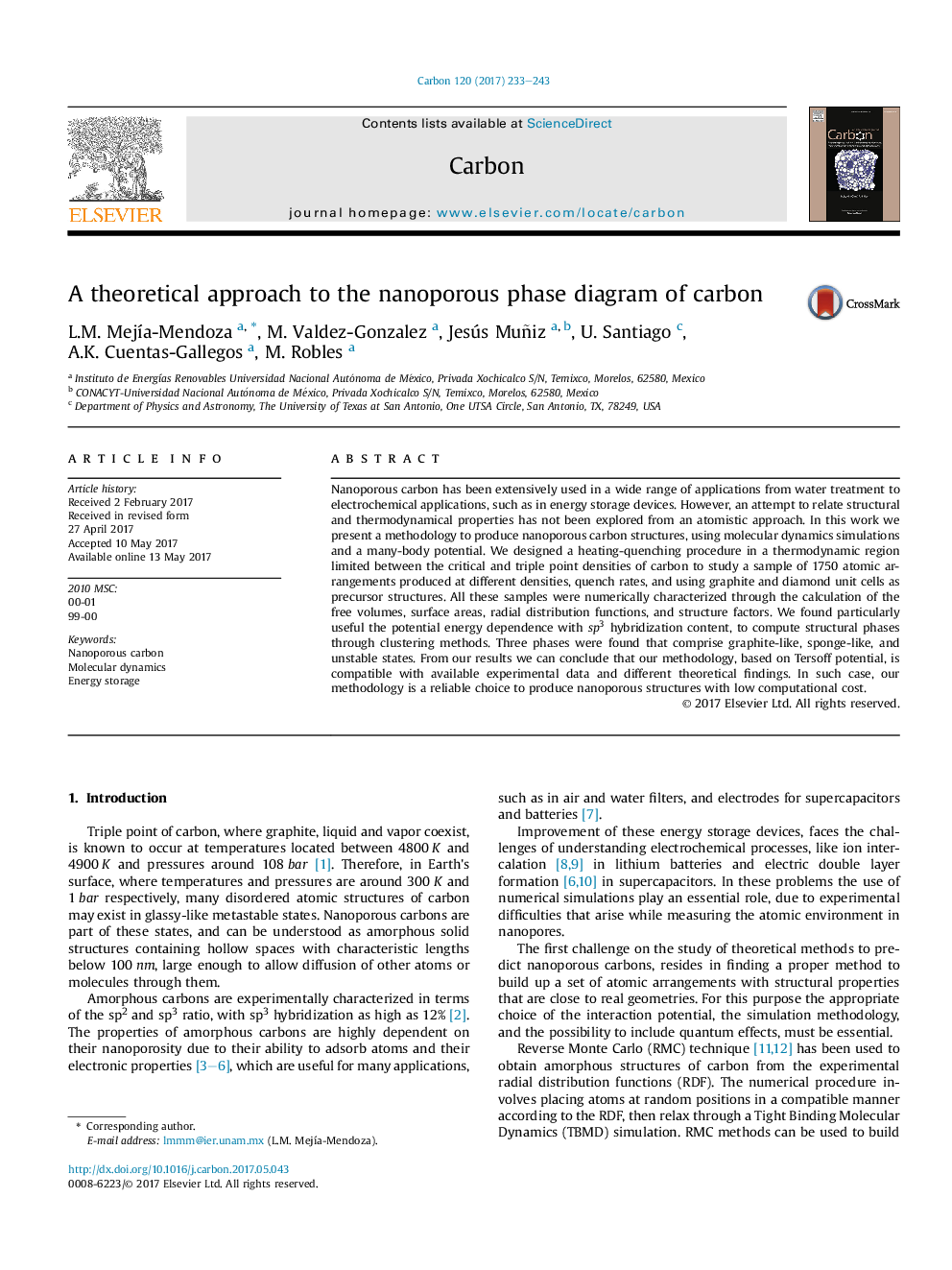| Article ID | Journal | Published Year | Pages | File Type |
|---|---|---|---|---|
| 5431646 | Carbon | 2017 | 11 Pages |
Nanoporous carbon has been extensively used in a wide range of applications from water treatment to electrochemical applications, such as in energy storage devices. However, an attempt to relate structural and thermodynamical properties has not been explored from an atomistic approach. In this work we present a methodology to produce nanoporous carbon structures, using molecular dynamics simulations and a many-body potential. We designed a heating-quenching procedure in a thermodynamic region limited between the critical and triple point densities of carbon to study a sample of 1750 atomic arrangements produced at different densities, quench rates, and using graphite and diamond unit cells as precursor structures. All these samples were numerically characterized through the calculation of the free volumes, surface areas, radial distribution functions, and structure factors. We found particularly useful the potential energy dependence with sp3 hybridization content, to compute structural phases through clustering methods. Three phases were found that comprise graphite-like, sponge-like, and unstable states. From our results we can conclude that our methodology, based on Tersoff potential, is compatible with available experimental data and different theoretical findings. In such case, our methodology is a reliable choice to produce nanoporous structures with low computational cost.
Graphical abstractDownload high-res image (367KB)Download full-size image
